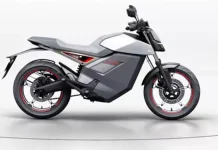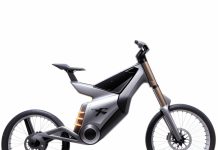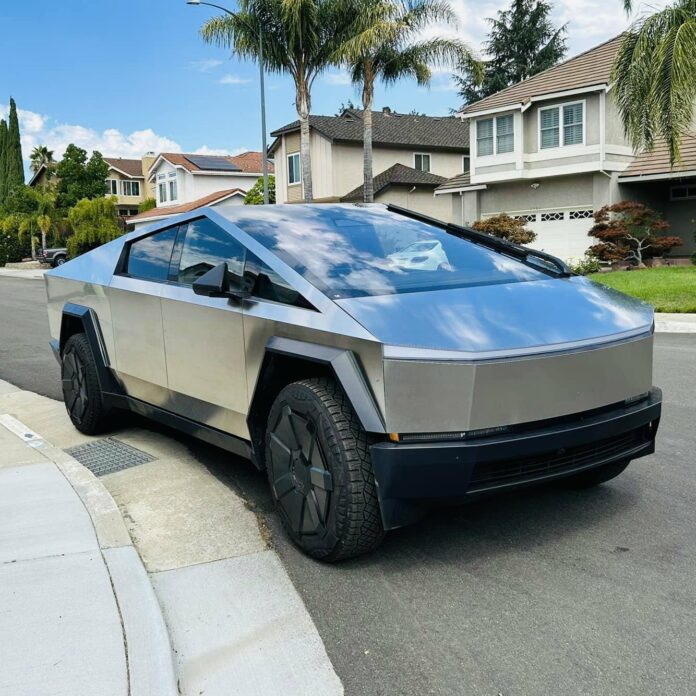Tesla Cybertruck
The Tesla Cybertruck represents a significant and bold step in the evolution of electric vehicles, particularly in the highly competitive and traditionally gas-dominated pickup truck segment. Launched by Tesla, a leader in electric vehicle innovation, the Cybertruck has garnered widespread attention and anticipation due to its unconventional design and promising cutting-edge features.
As Tesla prepares to deliver the first units of the Cybertruck, there is considerable interest in how this vehicle will perform in the market, how it will compare with its rivals, and what impact it will have on the future landscape of electric vehicles. This discussion aims to explore these aspects, delving into the unique characteristics of the Cybertruck, its potential market impact, and how it stands against an increasingly competitive backdrop of electric vehicle offerings in the pickup truck category.



Electric Pickup Truck
The Tesla Cybertruck, a highly anticipated electric vehicle, represents Tesla’s foray into the competitive pickup truck market. With its unique design and innovative features, it has garnered significant attention. As it nears its first deliveries, various sightings and reports have offered insights into its design and functionality. This analysis will delve into the key features of the Cybertruck, examine its competitors, and discuss its pros and cons.
Top Key Points
- Tesla is delivering its first Cybertruck units later this month, and more details about the vehicle have been emerging.
- A recent sighting has revealed that the Cybertruck will have interior ambient lighting and a floor-mounted accelerator pedal.
- The Cybertruck’s interior ambient lighting was also teased in a sighting in August, and it appears to run all the way along the rear door trim in addition to the front door trim and the dashboard.
- Tesla is holding a delivery event for the Cybertruck on November 30 at the automaker’s Gigafactory in Austin.
- Cybertruck buyers will be subject to a “no resale” policy, in which owners will not be allowed to sell their vehicles within a year without incurring serious fines and potential legal action.
EV Innovation
Here are some potential implications:
- Interior Ambient Lighting and Dashboard Design: The sighting of the Cybertruck’s interior ambient lighting, including its extension along the rear door trim, suggests Tesla is focusing on a modern and potentially customizable interior aesthetic. This could appeal to a market segment that values both functionality and style in vehicle design.
- Floor-Mounted Accelerator Pedal: This design choice is a departure from the more common top-hinged pedals in many cars. Floor-mounted pedals can offer a different driving feel, potentially providing more comfort or control, which could be a subtle but appreciated feature for drivers.
- Unique Features and Branding: The Elon Musk air freshener and the Cybertruck silhouette on the steering wheel are interesting branding touches. These could enhance the sense of exclusivity and personal connection for owners with the brand and Elon Musk himself.
- Exterior Features: The noted features like the powered tonneau cover, rear-wheel steering, and bed power outlets indicate a focus on practicality and versatility, which are key selling points for truck buyers. These features, if well-executed, could make the Cybertruck a strong competitor in the utility vehicle market.
- Delivery Event and Shareholder Engagement: The upcoming delivery event at the Gigafactory in Austin and the drawing for shareholders to attend signify Tesla’s effort to create hype and engage closely with its investor community. This could positively impact investor sentiment and public perception.
- No Resale Policy: This policy could indeed deter buyers who might want to flip the vehicle for profit, ensuring that the first wave of vehicles goes to genuine users. This approach might help in stabilizing the market and maintaining the brand’s exclusivity, although it could also face criticism from a consumer rights perspective.
The combination of these features and policies shows Tesla’s continued innovation and unique approach to vehicle design and market strategy. The Cybertruck appears poised to make a significant impact in the electric vehicle market, especially in the utility vehicle segment, challenging traditional notions of what a truck can offer.
Sustainable Transportation
Key Analysis
Design and Features:
- Interior: The Cybertruck’s interior includes ambient LED lighting and a floor-mounted accelerator pedal, indicating a focus on a modern and potentially luxurious driving experience.
- Exterior and Functionality: Features like the powered tonneau cover, rear-wheel steering, and bed power outlets suggest a blend of utility and innovation.
Market Strategy:
- Brand Engagement: The inclusion of Elon Musk-themed accessories and unique branding elements is a strategic move to strengthen brand loyalty.
- No Resale Policy: Aimed at deterring vehicle flipping for profit, this policy could maintain market stability and brand exclusivity but might face criticism for consumer restrictions.
Advanced Automotive Technology
Competitors
- Ford F-150 Lightning: As an electric version of the best-selling pickup in the U.S., it poses a significant challenge with its brand recognition and established customer base.
- Rivian R1T: A newcomer focusing on the premium electric truck market, known for its off-road capabilities and innovative features.
- Chevrolet Silverado EV: With Chevrolet’s reputation and an electric version of their popular pickup, they are a strong contender in the electric truck market.
Pros and Cons
Pros:
- Innovative Design: The Cybertruck’s unique design sets it apart, potentially attracting customers seeking something different.
- Functional Features: The utility-focused features like bed power outlets and rear-wheel steering cater to practical needs.
- Brand Loyalty: Tesla’s strong brand following could drive sales and market acceptance.
Cons:
- Design Polarization: The unconventional design might not appeal to traditional truck buyers.
- Market Competition: Well-established competitors in the electric truck segment could challenge Tesla’s entry.
- Resale Policy: The no-resale policy might be viewed negatively by consumers who value flexibility in ownership.
Conclusion
The Tesla Cybertruck marks a significant moment in the evolution of electric vehicles, particularly in the pickup truck segment. Its launch is not just about a new vehicle entering the market; it represents Tesla’s bold approach to challenging traditional automotive norms and pushing the boundaries of design and technology.
With its distinctive aesthetic, the Cybertruck may divide opinion, but it undeniably captures attention, highlighting Tesla’s willingness to innovate and take risks. The combination of practical features like the powered tonneau cover and rear-wheel steering, along with unique elements like the ambient interior lighting and floor-mounted accelerator pedal, showcase a vehicle designed not just for utility but also for a distinctive user experience.
However, the Cybertruck enters a rapidly growing and increasingly competitive market. Established automotive giants and emerging players are all vying for a share of the electric vehicle market, particularly in the pickup truck category. Tesla’s brand strength and loyal customer base provide a significant advantage, but the success of the Cybertruck will also depend on how well it meets consumer expectations in terms of performance, reliability, and overall value compared to its rivals.





































